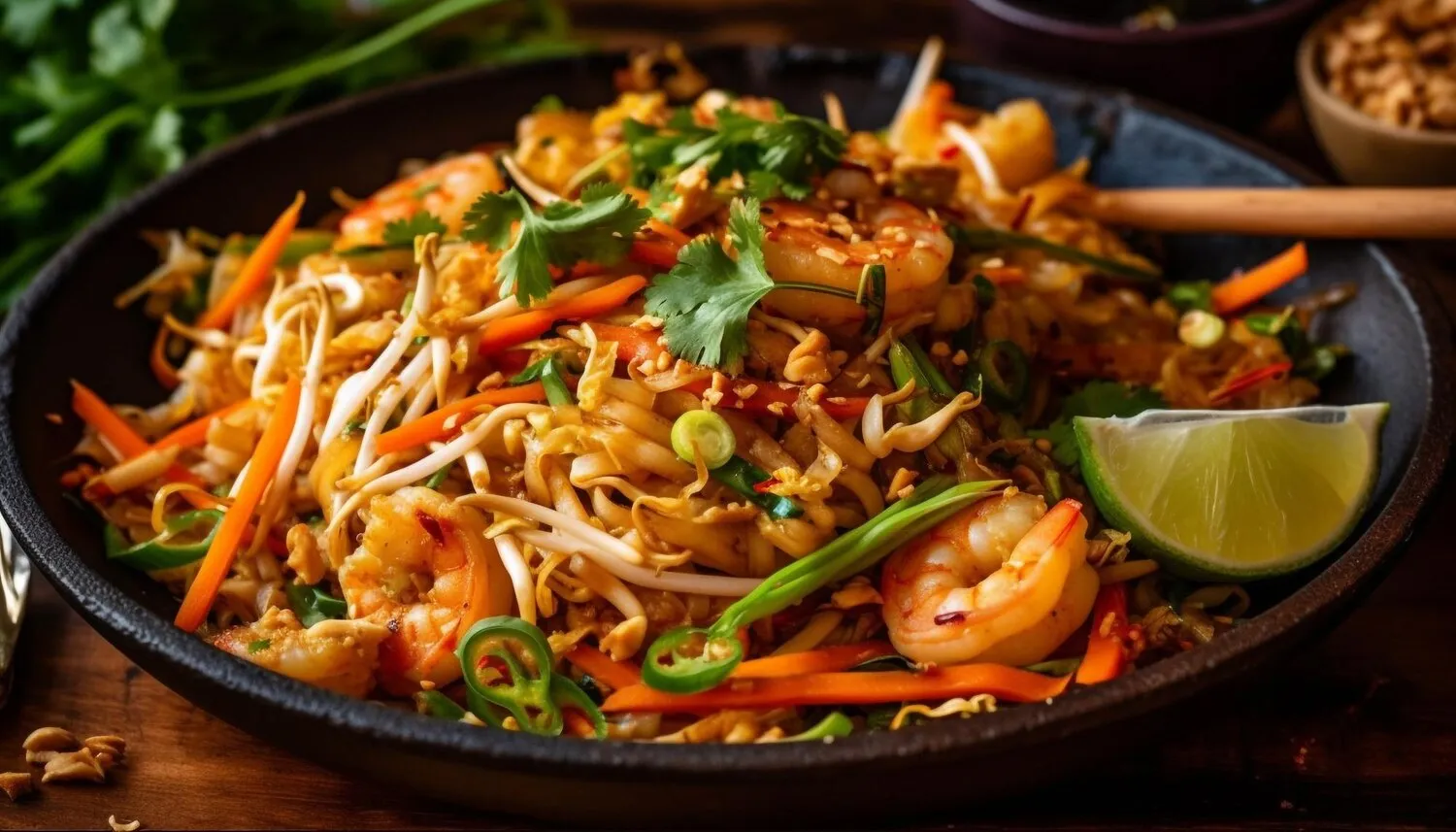
Noodles
Noodle dishes are frequently mentioned in online reviews, indicating they are a common choice.
Nutrition Facts
* The % Daily Value (DV) tells you how much a nutrient in a serving of food contributes to a daily diet. 2,000 calories a day is used for general nutrition advice.
Global Fusion Bistro
Noodles have a long and rich history, believed to have originated in China as early as 2000 BC. Archaeological evidence supports this, with the discovery of the world's oldest noodles in Lajia, China. The Silk Road facilitated the spread of noodles to other parts of Asia and eventually to Europe, where they evolved into pasta.
Noodles hold significant cultural importance in many societies, especially in Asia, symbolizing longevity, prosperity, and good fortune, particularly during celebrations and festivals.
Longevity Noodles
In Chinese culture, long, uncut noodles are often served on birthdays as a symbol of a long life. Cutting the noodles is considered bad luck.
New Year Celebrations
Many Asian cultures feature noodle dishes as part of their New Year celebrations, believing they bring good luck and prosperity for the coming year. For example, Japchae is a common dish served on Seollal (Korean Lunar New Year).
Regional Variations
The sheer diversity of noodle dishes reflects the unique culinary traditions and local ingredients of different regions. Ramen in Japan, Pad Thai in Thailand, Pho in Vietnam, and Lo Mein in China are just a few examples of noodles that have become integral to their respective national cuisines.
The flavors of noodle dishes are incredibly diverse, ranging from savory and spicy to sweet and tangy, largely dependent on the specific ingredients and regional variations.
Noodle dishes achieve flavor complexity through a combination of: Umami from soy sauce, mushrooms, and seafood; spiciness from chili peppers, garlic, and ginger; sweetness from sugar or honey; acidity from vinegar or citrus; and richness from oils, fats (e.g., sesame oil, lard), and proteins (e.g., meat, tofu). Common ingredients include various vegetables (bok choy, scallions, bean sprouts), meats (pork, chicken, beef, shrimp), seafood, tofu, eggs, and a wide array of sauces and seasonings like soy sauce, oyster sauce, chili oil, sesame oil, vinegar, and spices.
Noodle Cooking Time
Always follow the package instructions for cooking noodles. Overcooking results in mushy noodles, while undercooking leaves them hard and unpalatable. Taste-test frequently to achieve the perfect al dente texture.
Sauce Consistency
When adding sauce to noodles, ensure the sauce is not too watery. A thicker sauce will cling to the noodles better, resulting in a more flavorful dish. Thicken sauces with cornstarch or a roux if needed.
Noodle Type Selection
Consider the type of noodle when preparing the dish. Thicker noodles pair well with heavier sauces, while thinner noodles are better suited for lighter sauces or soups. Experimenting with different noodle types can significantly impact the overall flavor and texture of the dish.
Explore additional Noodles dishes and restaurants
Explore NoodlesDiscover top dining spots and culinary experiences in Chestermere.
Explore ChestermereLearn more about the food culture, restaurant scene, and culinary heritage of Canada.
Explore Canada